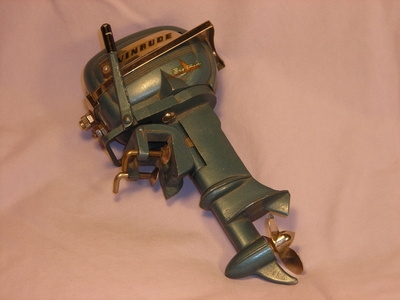
Placing an outboard on the back of a boat requires a bit more than just hanging the motor over the transom and cinching the clamps tight. The boat owner must make sure the engine does not exceed the horsepower and weight for the size of his watercraft, according to manufacturer's specifications. Tilt angle and prop depth play a crucial role in setting a motor correctly for optimum performance and safety. Certain rules of thumb have been applied for any boat owner who wishes to set up his motor correctly.
The outboard motor should be set on the transom following the exact center line or keel of the boat. The prop shaft should be equidistant from the ends of the hull bottom, placed exactly in the center of the boat's mid-line. Any deviation could allow the boat to drift off center during low-speed operation.
The outboard motor should have enough transom height so the exhaust port relief holes will not be submerged. The relief holes should protrude at least 1 inch higher than the water line during idle with a running engine. A lower mounting will restrict the exhaust and cause exhaust back-pressure.
For L-size motor outboards, the mounting height must not be higher than 25 inches. For XL outboard model engines, the mounting height must not exceed 30 inches. For outboard models of the XXL size, the mounting height should not exceed 35 inches. The height represents the measurement from the outboard bracket to the bottom of the boat transom. Propellers made for surfacing performance should be used for any height over 22 inches.
Freshwater boats ranging up to 125 hp should use shaft lengths of 20 inches. Single motor V6 boats with a bass boat classification should use 20-inch engines. Single motor boats used in salt water should use 25- to 30-inch shaft lengths. Boats with dual outboard engines need 25-inch engines, but with extended back plates on the transom they should have 30-inch engine shaft lengths. Three and four multiple engine shaft lengths must be determined by the manufacturer's specifications.
A minimum of 1/2 inch diameter stainless steel bolts should be used to mount the engine bracket to the transom plate. The bolts should be of sufficient length to pass through the transom, leaving at least eight thread turns of length for the application of the lock nut. There should be four locking nuts and eight flat washers, two flat washers per bolt. Marine silicone sealer should be used on both shank locations of the bolts.
One inch in engine height over standard can be allowed for every 10 mph over 40 mph, but cannot exceed a total of 5 inches. For every 12 inches the outboard sits behind the transom, or in the transom notch, the height of the engine can be raised 1 inch.